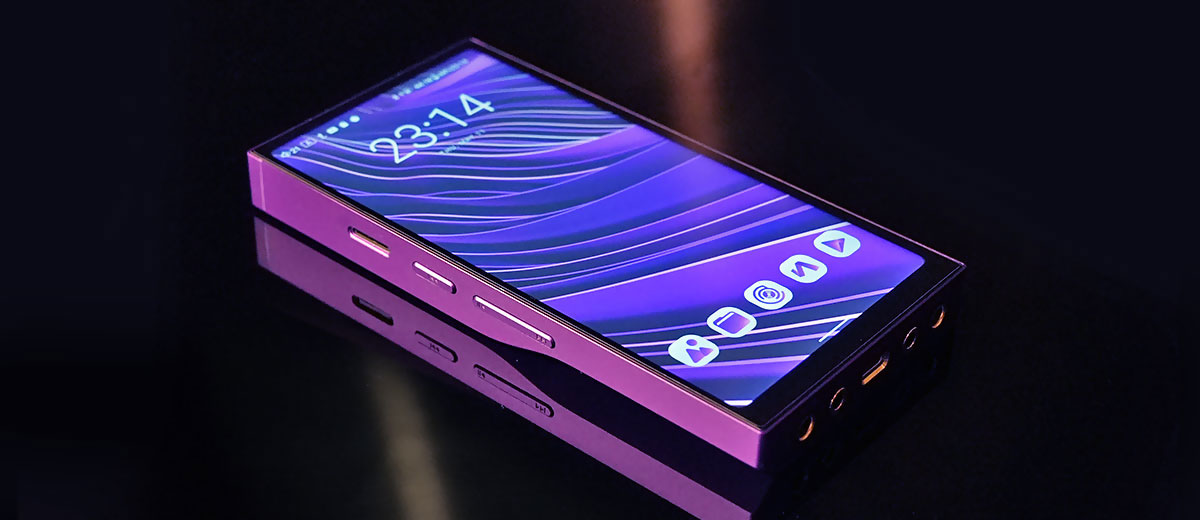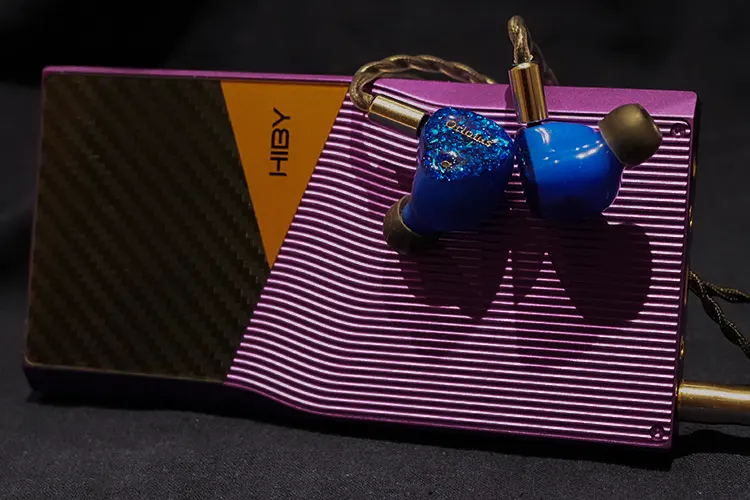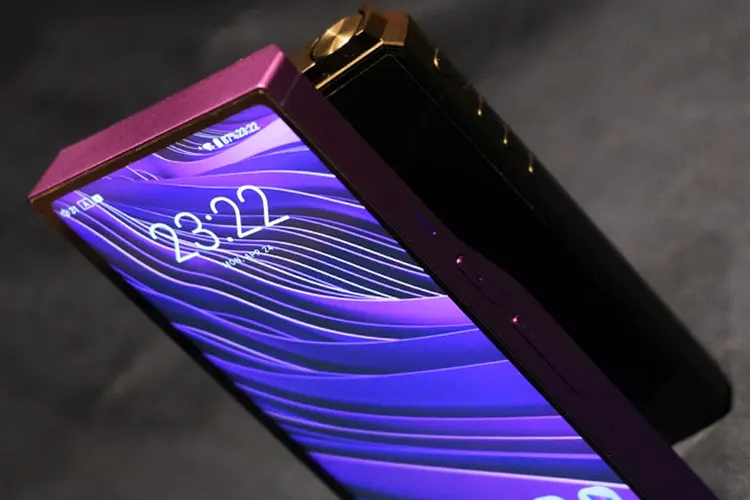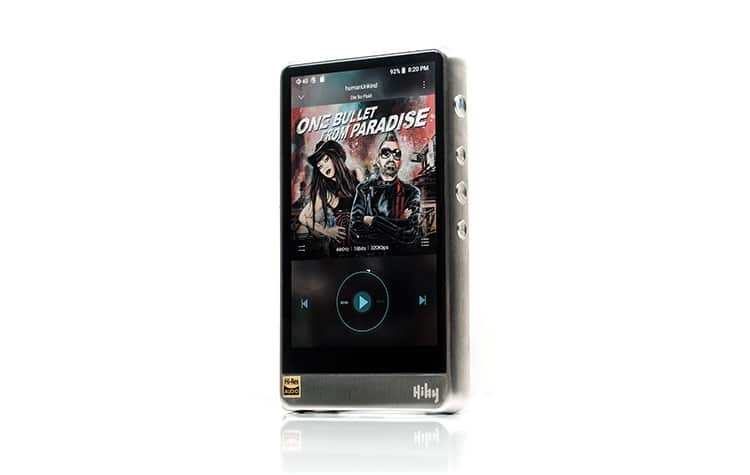Synergy
Efficiency
The R6 Pro II has the noise floor nicely controlled at lower gains, you can hear faint hisses on Class A mode at higher volume, and more obvious with sensitive multi-BAs, though when the music is set in it feels negligible.
On higher gain it is more detectable but, in most cases, I am using lower gain modes and noise control is not the quietest though satisfactory.
Power
As most of the power is optimized for decoding, the output feels more refined than just delivering a lot of raw power, which makes pairing with sensitive gears especially CIEMs more enjoyable.
To elaborate further, the HiBy R6 Pro II has a remarkable ability to capture intricate details when it comes to soft vocal performances. However, when used with high-impedance headphones, the mid-lows may appear slightly thinner, although the R6 Pro II still manages to produce a well-layered and detailed sound overall.
IEM Pairings
The test starts with the Oriolus Szalayi which is a planar + DD + BA tribrid, rated at 16ohms and 111db/mW in sensitivity. On R6 Pro II the Oriolus sounds wide, dynamic, and satisfactorily layered.
It sounds meaty and tight in the bass punch while being smoothly presented in the midrange frequencies.
The treble is very well controlled to take away all sibilant while having excellent clarity, at lower volume the vocal may sound too polite and the sweet spot is at a slightly higher volume to me.
The R6 Pro II is doing well with this pairing for techno to sound airy and ethereal with the vocal. It is clear how better decoding enhances the output quality, control, and density on the Szalayi when compared to my MacBook or inferior sources.
Switching to the Earsonics SWITCH 300 PRO, which is rated 35Ω in impedance and 119db/mW for sensitivity, the higher impedance will require a stronger voltage swing to sound engaging, and it will require good decoding quality for it to sound tight and controlled.
In practice, the SWITCH 300 PRO requires higher gain than the Szalayi to sound dynamic, but the tuning on the R6 Pro II matches quite well with the SWITCH 300 PRO to deliver deep bass and gives the vocal sufficient penetration power.
Staging is also the strength of this pairing. The MSEB tuning filters help to shape the vocal more textured. Overall, the midrange is naturally delivered, textured, and clearly imaged, the treble may roll off slightly fast but if you want the vocal to be sweet then you may actually prefer this.
Headphone Pairings
Testing the R6 Pro II with the Moondrop Venus, planar headphone with a 10cm wide Sub-Nanometer Diaphragm that requires sufficient current to drive, the R6 Pro II is able to deliver solid mid-bass that is not lacking in speed. However, it couldn’t reach deep into the sub-bass.
The vocals are smoothly delivered, and you can still sense its separation from the backing track, and with relaxing music and Jazz the clarity and extension are satisfactory, though it may sound slightly boxy with a rather sharp roll-off.
The R6 Pro II is obviously not designed to handle this but you can feel it potential to be connected with an external amplifier to boost the output power.
Select Comparisons
HiBy R6 III
$499
Technical
The R6 III boasts a Dual ESS 9038Q2M decoders design, and it outputs 405mW max on 4.4mm BAL out which is slightly higher than the R6 Pro II.
Unsurprisingly it is capable of MQA 16x decoding, powered by the Qualcomm Snapdragon 665 solution but its overall decoding limits are lower at DSD512 and PCM768. The inclusion of these features marks a significant improvement from the previous generations, particularly in terms of operating system capabilities featuring Android 12.
Design
The faceted design on the R6 III is reminiscent of the RS8 which is a futuristic and masculine appearance. The R6 Pro II feels very different even when it is still crafted from aluminum like the R6 III. It has a more sophisticated, artistic design and a more playful color scheme.
To me, the R6 Pro II feels more premium with the larger screen-to-body ratio and minimalistic design with the knobs and all the extra protruding areas taken away.
Performance
Putting the two head-to-head and using the HiBy Crystal 6 IEM to test, the R6 Pro II is a step clearer, less colored, and more layered in the mids, as well as the overall detail retrieval level.
Using some live techno mixes to test the R6 III sounds rich and dynamic, however, the R6 PRO II is able to deliver deeper, more details, tighter bass punchy, and sounds a tad bit more accurate in positioning, overall being more proficient in terms of technicalities.
The output power is similar though you can easily feel the difference in output quality, especially in regard to density and layering.
The R6 PRO II in both A and AB mode delivers superior control and finesse especially in the mid-range when listening to fast tunes and vocal works. On the other hand, the extension is also better on the R6 Pro II, which allows it to handle different genres more effortlessly.
FiiO M11 Plus ESS
$699 USD
Technical
The FiiO M11 Plus ESS running on Android 10 features a dual ES9068AS DAC design, 4GB RAM, and THX-AAA 78 amplification. Additionally, the device has a 5.5-inch 720p display and is equipped with a 6000mAh battery that runs 14 hours on a single charge which is excellent for its size.
It outputs 660mW into a 32Ω load though the output impedance of both DAPs is a bit high at 2Ω balanced so they may not be as impedance friendly to very sensitive IEMs. That is a bit odd considering the focus of the HiBy R6 Pro II on quality sound for IEMs.
Design
The FiiO M11 Plus ESS features a honeycomb-themed bodywork with a touch-sensitive slider for volume control. Below the slider, there is a multi-function button for quick menu access.
The case back has a diamond-cut glass-looking design which looks very cool though not as colorful and luxurious as the case back of the R6 Pro II. The R6 Pro II feels quite a bit slimmer and sleeker, also lighter even when the screen feels 10% bigger, which makes it handier for multimedia viewing.
In terms of the UX, the newer OS on the R6 Pro II further differentiates it from the competition and you can see deeper customization on the drag-down menu. There are more digital filtering options on the HiBy R6 Pro II that is more advanced and feels more professional.
Performance
The FiiO M11 Plus ESS is nearly double in output power and more suited to IEMs or headphones that have higher impedance or lower sensitivity ratings.
Using the Effect Audio GAEA to listen to live techno music and classical music, the bass on the R6 Pro II feels lively and controlled. It has a stronger sense of accuracy compared to the M11 Plus ESS, which has a more altered tuning with sensitive IEMs.
The M11 Plus ESS slams sharper in the bass and stretches the stage wider, while the R6 Pro II has stronger detail retrieval power and layering especially in the mid-lows. The HiBy DAP also has a tighter, more stereophonic vocal image which sounds more defined overall.
For sensitive IEMs that rely more on decoding quality than raw power, also require lower output impedance for pairing this is where the R6 Pro II has an advantage.
Even at a lower volume, the R6 PRO II enjoys higher dynamics and more air. This time the bass sounds more organic on the R6 Pro II with richer bass texture, and when connecting an amplifier, I find the HiBy’s 4.4mm LO sounding denser and more detailed.
Testing with the Westone MACH 40, the M11 Plus ESS is able to deliver punchier lows, whereas the R6 PRO II sounds flatter, especially if you don’t put on the DSP filters.
When the MSEB filter is in effect, the R6 PRO II comes closer in perceived dynamics though the limited output power still gives it a hard time when handling ‘explosive’ bass.
HiBy R6 Pro
$529
Technical
The HiBy R6 Pro features a 4.2-inch touch screen with a resolution of 1280×728, a Snapdragon 425 CPU, and ES9028Q2M DAC that can decode high-resolution audio formats up to DSD256 and 32bit/384kHz PCM signals.
It also has a balanced output that can deliver up to 400mW of power. Although these specifications were impressive at the time of its release, compared to the newer R6 Pro II, it is clear how far HiBy has come in delivering even more robust hardware.
The R6 Pro II outperforms its predecessor in many aspects, especially OS features, making it a top contender in the current market
Design
Years ago, HiBy started with a pebble-like, rounded design on the R6 Pro, and I really how they play with stainless steel to smooth out the edges and create something more organic in shape than boxed designs.
This second iteration for the R6 line has done the magic again to bring in unusual curves and a beautiful blend of materials.
I liked a lot the R6 Pro back then for its strong output power, clean design, and portability, and the R6 Pro II nails it again as it feels just as light. With the much bigger screen, it looks and feels much more advanced and is quite a big step forward.
Performance
To keep it short here, the original R6 Pro is left trailing for resolution, and actual UI/UX performance as well as the tuning has been much more matured on the R6 Pro II.
With newer hardware, the R6 Pro II is able to sound more textured, defined, neutral, and powerful at the same time. The balanced output performance is more pleasing than before.
When observing the signature of the two DAPs there are some resemblances, I think both can be benefitted from MSEB to add to the musicality. The newer R6 Pro II is more versatile having better connectivity and much enhanced DSP options that could yield even higher performance and refined tuning profiles.
Our Verdict
The HiBy R6 Pro II has a cool design with an unusual positioning that leans toward the decoding quality rather than high amping power, which is normally a traditional DAP focus these last few years.
The smooth tuning with rich bass texture is a good start for those who love to mess with the DSP filters including MSEB. Streaming Videos and high-resolution music on the R6 Pro II is enjoyable with the huge screen and so as its unique aesthetics and color palette that is very delightful.
If you are looking for a light multi-media player with a big screen or a source for your amplifiers, the R6 Pro II would be a nice pick. The slightly laid-back signature is perfect for melodic techno tracks and smooth jazz tracks on the go.
HiBy R6 Pro II Technical Specifications
- Android 12 with system-wide DTA Architecture
- Qualcomm Snapdragon 665 SoC + 4GB RAM
- Dual AK4499EX DAC in OCTA-DAC architecture
- AK4191EQ for the digital stage
- 2 OPA1652 and 8 NXP bipolar transistors
- Class A/AB Amplification Switch
- Native DSD1024 and 32-Bit PCM
- 9’’ 2K Multi-touch Display
- 64GB Internal Storage with 2TB Micro SD Support
- 4/5 GHz WiFi
- Aluminum Construction with glass backplate (248g)
- OTA Firmware Updates + Google Play Store
- 5000 mAh Battery with Fast Charging
- 4mm BAL LO + 3.5mm UNBAL LO on the left side
- 5mm UNBAL PO + 4.4mm BAL PO on the right side







